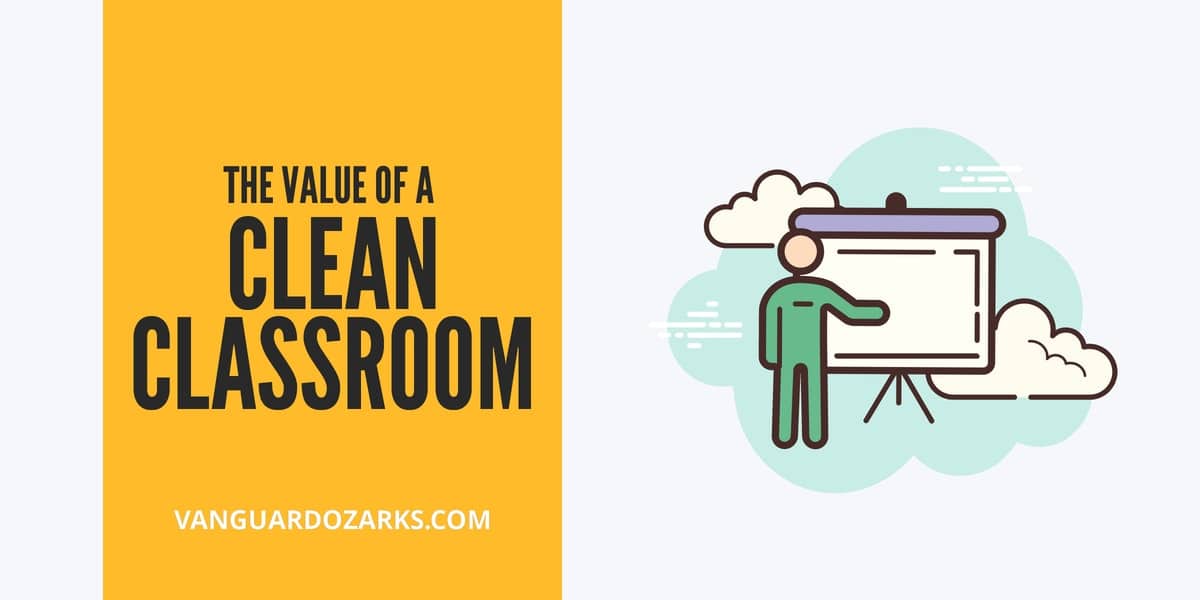The right kind of cleaning not only provides a safe and productive learning environment for children, but it will also help improve the financial outlook for the district.
Why Clean Classrooms Matter
The environmental impact of classroom and educational facility hygiene cannot be underscored enough, specifically in regards to student and faculty attendance and performance.
Put simply--healthy classrooms equate to healthy students and teachers, which translate into more time spent together in the classroom, ultimately resulting in better grades and test scores.
Schools that perform better are more attractive to parents, especially those willing and able to relocate--ultimately translating into more tax dollars for the district.
However, just because your custodial team is regularly cleaning does not mean they are cleaning appropriately or adequately, especially during cold and flu season, which can have a dramatic impact on both student and teacher attendance.
Cleaning the Right Way
Cleaning with the wrong chemicals can be just as bad, if not worse, than not cleaning at all.
That should go without saying, but some cleaning supplies are toxic and are known to include VOCs (volatile organic compounds).
VOCs can cause chronic respiratory troubles, allergic reactions and headaches.
Students may not catch a disease by being exposed to VOCs, but some will likely go home with a splitting headache, a rash or an asthma attack.
Further, regular deep cleaning must be mandatory to account for the statistically high number of germs and bacteria present in high-traffic shared spaces.
Throughout the school day, children are coughing in the hallways and classrooms, sneezing into their hands and then touching doorknobs and desks and more.
Everybody’s shoes are bringing in whatever they have stepped on outside.
It’s no wonder that each child in an elementary school will catch eight to 12 colds or cases of the flu every school year, according to John Hopkins Medicine. (For high schoolers, it’s usually half that.)
That means your student body is constantly and continuously at risk for dangerous bacteria and germs.
Cleaning a school frequently cuts down on illnesses and therefore attendance problems – for both students and teachers.
Investing in Sustainability and Cleaning for Health
In regards to advancing technologies to improve cleanliness and hygiene in classrooms, schools across the U.S. are seriously underfunded--often leading administrators to make decisions that exacerbate the heath problems, as opposed to addressing them.
According to data provided by The Center for Green Schools:
- On any given day, one in six Americans will step foot inside of a classroom, and;
- School grounds make up an area three times the State of Rhode Island, with a building square footage equivalent to half of that taken up by commercial buildings in the U.S.
However;
The 2016 State of Our Schools report took a look at state-by-state investment in public school infrastructure and found that we are only investing about 2/3 of what is needed each year to keep our schools up-to-date and in good working order.
The lack of investment has an impact on student learning and on the health of students, teachers, and staff.
The absence of investment in sustainable and environmentally-preferred cleaning products and equipment runs contrary to the findings published in recent studies which have reported that investing in these programs:
- Produces a net reduction resource use--water and energy--while decreasing waste production, while;
- Increasing the health and performance of all occupants, specifically teachers and students.
Tips to Get Started
Ultimately, consulting with a professional service provider experienced in delivering environmentally-preferable commercial cleaning services will be necessary to properly onboard your district's services, and the sooner your administration makes that decision, the more successful your program will be.
In the meantime:
- Look at the labels on the cleaning chemicals your custodial staff is using and determine their level of toxicity and the dangers they pose to children, especially in the area of respiratory issues.
- Identify the products that are likely causing more harm than good, and replace them with a product certified by a third-party non-profit as safe for use in the classroom.
- Next, assess your cleaning zones and calendar--what are your teams cleaning and when.
- Reframe your cleaning procedures to provide for regular deep cleaning services for each zone, based on occupancy and use, and daily disinfection of high-contact surfaces in classrooms, libraries, gyms, and cafeterias.
If our district lacks the personnel or equipment--which it likely does--to facilitate this level of health and safety, it's time to outsource to an organization that can supplement your requirements.
Takeaway
Every year billions of dollars are spent and lost in the public education system due to the absence of modern cleaning practices that focus on the health and safety of facility occupants and the sustainable use of natural resources.
This is a trend that must end to provide our children with a bright future, as well as a healthy world to live in.
Outsourcing is a proven method for cost-effectively supplementing valuable skills and experience before, during, and after the transition from conventional cleaning methods, to solutions more in line with increasing the quality of our classrooms, and the education these facilities provide.
Contact us today and discover why Vanguard Cleaning Systems® is the Standard of Clean® for businesses throughout Northwest Arkansas, Missouri, and Oklahoma.
In Oklahoma, dial 918-960-4450
In Arkansas, dial 479-717-2410
In Missouri, dial 417-812-9777

